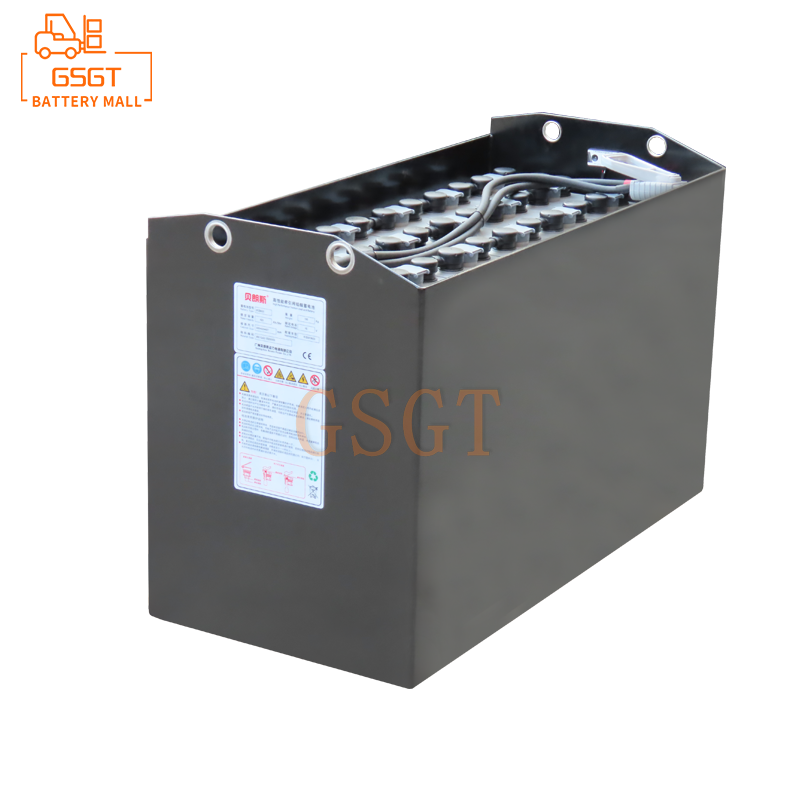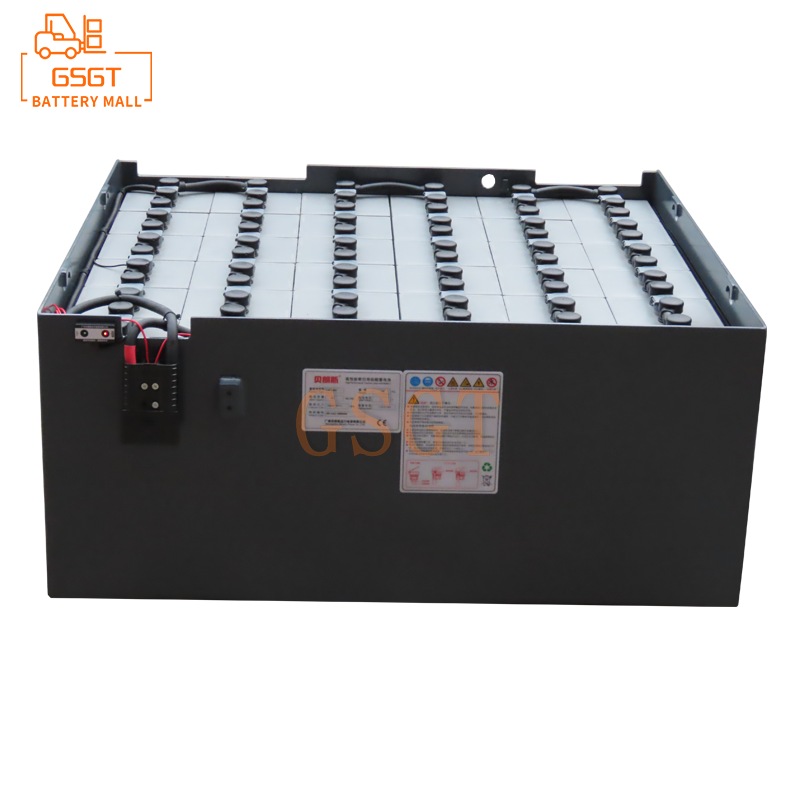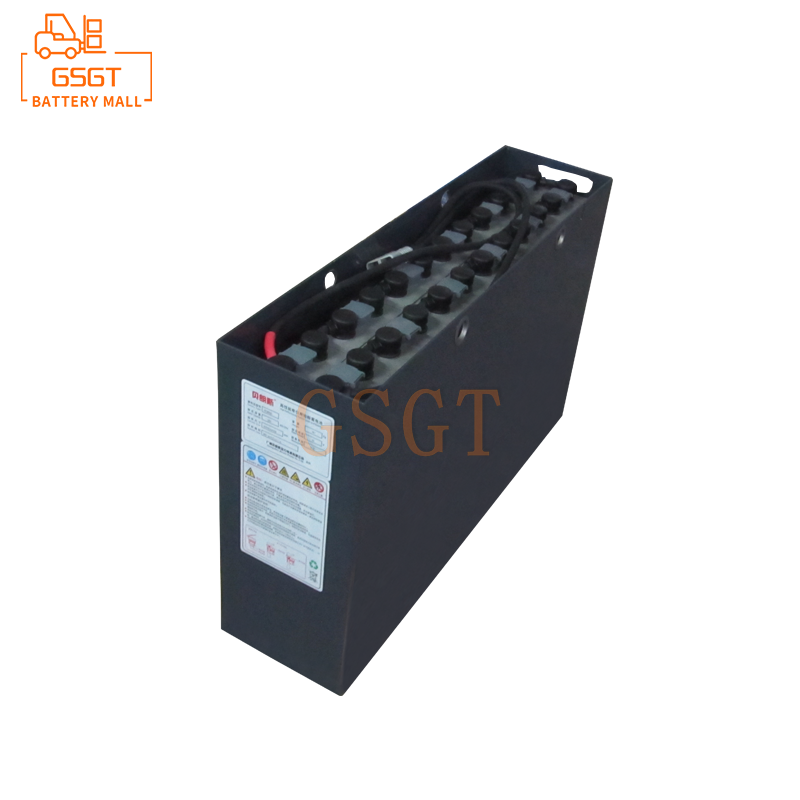Time:2025-05-08 11:21:30
Browse:595
Introduction
In modern logistics warehousing and industrial production fields, forklifts, as key material handling equipment, their efficient and stable operation is of vital importance. As the power source for many forklifts, the performance of lead-acid batteries for forklifts is directly related to the operational performance of the forklifts. Among them, voltage and capacity are two core parameters of lead-acid batteries, which have a profound and complex impact on multiple aspects of forklift operations, including power output, endurance, operational efficiency, service life, and overall operating costs. An in-depth exploration of the influence of the voltage and capacity of lead-acid batteries in forklifts on operations has indispensable practical significance for optimizing the use of forklifts and improving the operational efficiency of enterprises.
The working principle and basic parameters of lead-acid batteries for forklifts
A brief description of the working principle
Forklift lead-acid batteries are mainly composed of positive and negative plates, electrolyte, separators and casings, etc. Its working process is based on electrochemical reactions. During charging, electrical energy prompts sulfuric acid to react with the lead plates, converting electrical energy into chemical energy for storage. During discharge, the active substances on the plates react with the electrolyte again, converting chemical energy back into electrical energy to supply power to the forklift's motors and other equipment. During this process, the materials and structures of the positive and negative plates, as well as the concentration of the electrolyte, are all closely related to the voltage and capacity of the battery.
Relevant parameters of voltage
Individual cell voltage and total voltage: The rated voltage of each individual cell in a lead-acid battery is usually 2V. In practical applications, forklift battery packs are composed of multiple individual batteries connected in series to achieve the required working voltage. The total voltage determines the "pressure" of electrical energy that the battery can output and is one of the key parameters driving the forklift motor to operate.
Dynamic changes in voltage: During the charging and discharging process of a battery, the voltage is not constant. After being fully charged, the single battery is left to stand for half an hour and then connected to the load, with a voltage of approximately 2.17V. As the discharge proceeds, the voltage gradually drops. When the voltage of a single cell drops to around 1.7V, it is generally considered that the battery has been discharged to its limit state. Understanding this dynamic change characteristic of voltage is crucial for the rational use of forklifts, determining the remaining battery power and timely charging.
Relevant parameters of capacity
The definition of rated capacity: Rated capacity characterizes a battery's ability to store electrical energy. It is defined as the amount of electricity output by a battery when it is continuously discharged at a temperature of 30°C for 5 hours until the voltage of each individual cell drops to 1.7V. The unit is usually ampere-hours. The capacity is closely related to factors such as the number and area of the plates. The more plates there are and the larger the area, the higher the rated capacity of the battery is often.
Actual available capacity: In actual use, considering the battery's lifespan and performance, it is generally recommended to only use 80% of its rated capacity. Excessive discharge can cause irreversible damage to the battery and shorten its service life. For instance, a battery with a rated capacity of 500Ah has an actual safe and available capacity of approximately 400Ah.
The influence of voltage on forklift operation
Power output and speed performance
Starting and climbing ability: Voltage is a key factor affecting the torque and climbing ability of a forklift at the moment of starting. A higher voltage can provide a greater current at startup, enabling the motor to quickly output a powerful torque and allowing the forklift to easily lift heavy objects and start. In the climbing scenario, sufficient voltage can ensure that the motor maintains a stable power output, avoiding the dangerous situations of insufficient power, stagnation or even sliding of the forklift on the slope. For instance, in the multi-layered shelf areas of some logistics warehouses, forklifts need to frequently climb slopes to transport goods. At such times, forklifts equipped with high-voltage batteries have obvious advantages and can complete the climbing operations quickly and stably.
The traveling and lifting speed: Voltage is also directly related to the traveling speed of forklifts and the speed of goods lifting. Generally speaking, the higher the voltage, the faster the motor rotates, the faster the forklift travels, and the speed of goods lifting also increases accordingly. In large logistics parks, forklifts need to move rapidly across vast areas to transport goods. The high speed brought by high voltage can significantly enhance operational efficiency and reduce the time for goods handling. Take the comparison between 24V forklifts and 48V forklifts as an example. Under the same conditions, the traveling speed and lifting speed of 48V forklifts are often 30% to 50% faster than those of 24V forklifts.
The stability of the motor and control system
The operational stability of the motor: A stable voltage input is crucial for the smooth operation of the motor. If the voltage fluctuates too much or too little, the motor may experience problems such as unstable speed, shaking, and even overheating and burning out. When the battery voltage drops to a certain extent, the output power of the motor will decrease, causing the forklift to run weakly. If it operates in this low-voltage state for a long time, the service life of the motor will be significantly shortened. For instance, in some old forklifts, due to battery aging, the voltage is unstable, the motor frequently malfunctions, and the maintenance cost remains high.
The reliability of the control system: The control system of the forklift relies on a stable voltage signal to accurately control the various actions of the forklift. Abnormal voltage may lead to misjudgment of the control system, resulting in serious problems such as incorrect execution of operation instructions and failure of safety protection devices. For instance, when the voltage is too low, the overload protection system of the forklift may fail to function properly, causing the forklift to operate under overload conditions and increasing the risk of safety accidents.
The influence of capacity on forklift operations
Operation duration and driving range
Long-term continuous operation capability: The battery capacity directly determines the operation time of a forklift after a single charge. Large-capacity batteries can store more electrical energy, meeting the demands of forklifts in high-intensity and long-duration operation scenarios. At large port terminals, forklifts need to load and unload goods around the clock. Forklifts equipped with large-capacity batteries can operate continuously for 6 to 8 hours or even longer, significantly reducing the frequency of charging, ensuring the continuity of the operation process, and greatly improving the efficiency of goods turnover. On the contrary, small-capacity batteries may need to be charged every 2 to 3 hours. Frequent charging operations not only delay the work progress but also increase the cost of human resource allocation.
Long-distance operation endurance guarantee: For forklifts operating in vast areas such as factory zones and logistics parks, the endurance range is a key factor. Large-capacity batteries can ensure that forklifts do not have to worry about running out of power during long-distance driving and can freely move around various areas to transport materials.
Battery service life and replacement cost
The number of charge and discharge cycles and service life: Generally speaking, large-capacity batteries, due to their more reasonable internal plate and other structural designs, have a relatively higher number of charge and discharge cycles and a longer service life under normal use and maintenance conditions. Generally, large-capacity lead-acid batteries can last for 3 to 5 years, while small-capacity batteries, due to frequent deep discharges and fast charging, have plates that are more prone to damage, and their lifespan is often only 1 to 2 years. Frequent battery replacement not only increases direct procurement costs but also affects normal production and operation due to equipment downtime for maintenance, causing indirect economic losses.
Impact on long-term operating costs: In the long term, although the purchase cost of large-capacity batteries is usually higher, considering their longer service life and fewer replacement frequency, the overall operating cost may be lower. Although small-capacity batteries have a lower initial purchase price, the cumulative cost resulting from frequent replacement may be much higher than that of ultra-large-capacity batteries. For instance, a certain logistics enterprise initially chose small-capacity battery forklifts to reduce procurement costs. However, during the usage process, it was found that the frequent battery replacement expenses and business losses caused by downtime significantly increased the overall operating costs. After the forklifts were later replaced with large-capacity batteries, the operating costs were effectively controlled.
The influence of the synergy between voltage and capacity on forklift operations
Operational performance under complex working conditions
In actual forklift operations, various complex working conditions are often encountered, such as frequent starts and stops, heavy-load handling, long-distance driving, and working on roads with different slopes. At such times, the voltage and capacity of the battery need to work together. Under the working conditions of heavy load and long-distance transportation, high voltage is required to provide strong power output to ensure that the forklift can start quickly and move heavy objects, and large-capacity batteries are also needed to provide long-lasting power supply to ensure that the forklift can complete long-distance transportation tasks. If the voltage and capacity do not match, for instance, if the voltage is sufficient but the capacity is insufficient, the forklift may perform normally in the initial stage of starting and handling heavy objects, but it will be unable to continue operating during long-distance travel due to battery depletion. Conversely, if the capacity is sufficient but the voltage is insufficient, the forklift may not be able to start smoothly or move heavy objects at all.
Guiding significance for the selection and configuration of forklifts
Understanding the synergistic effect of voltage and capacity is of great guiding significance for enterprises to rationally select and configure forklifts. Enterprises should, based on their actual operational needs, comprehensively consider factors such as the usage scenarios of forklifts, the weight and frequency of goods being moved, and the size of the operation area to select forklift batteries with appropriate voltage and capacity. For forklifts performing light-load and short-distance handling operations in small warehouses, batteries with relatively lower voltages and smaller capacities can be selected to reduce procurement costs and equipment weight, and enhance operational flexibility. For forklifts that perform heavy-load, long-distance and high-intensity operations in large logistics centers, ports and other places, they must be equipped with high-voltage and large-capacity batteries to ensure the efficient and stable operation of the forklifts.
Conclusions and Suggestions
Conclusion
The voltage and capacity of lead-acid batteries in forklifts have profound impacts on operations in many aspects. Voltage mainly determines the power output performance of forklifts and the stability of the motor and control system, while capacity is directly related to the operation time, driving range, battery life and replacement cost of forklifts. The two work in synergy and jointly influence the operational performance of forklifts under complex working conditions. In practical applications, only by fully understanding and reasonably matching voltage and capacity can the efficient and stable operation of forklifts be ensured, bringing good economic benefits to enterprises.
Suggestion
Rational selection: When enterprises purchase forklifts, they should, based on their actual operation requirements, such as the weight of the goods to be moved, the size of the operation area, the intensity and frequency of the operation, comprehensively consider and choose forklifts and batteries with appropriate voltage and capacity. To avoid the forklift's performance failing to meet the operation requirements due to improper selection or causing resource waste.
Regular maintenance: Both voltage and capacity are affected by the battery's maintenance condition. Enterprises should establish a complete battery maintenance system, regularly check the electrolyte level and specific gravity of the battery, and replenish distilled water in a timely manner. Regularly perform charge and discharge maintenance on the battery to prevent overcharging or overdischarging. Regularly test the battery's voltage, capacity and other parameters to promptly identify and address potential battery issues.
Timely upgrade: As the enterprise's business develops and operational requirements change, if the voltage and capacity of the existing forklift battery cannot meet the requirements, it is necessary to consider upgrading or replacing the battery in a timely manner. Through reasonable upgrading and transformation, the operational performance of forklifts can be enhanced to meet the needs of enterprise development.

$2450

$4045

$1060

$3050

MESSAGE
Professional And Efficient
Security
Affordable Price
Professional Services